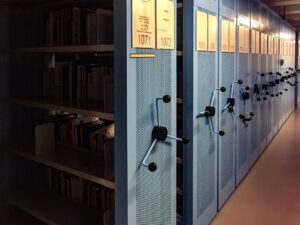EXCLUSIVE – National Archives to release hundreds of letters between the Queen and Governors-General.
Jan 2, 2021The National Archives of Australia is set to release decades of correspondence between the Queen and Governors-General, from Sir Richard Casey in 1965 to Bill Hayden in 1996. The decision follows the High Court’s ruling in my landmark ‘Palace letters’ case against the Archives which, in May 2020, overturned the Queen’s embargo over her correspondence with Governor-General Sir John Kerr, much of it relating to the dismissal of the Whitlam government.

The High Court’s ruling ended the absurd sophistry that letters between the Monarch and the Governor-General were ‘personal’, as the Archives and Buckingham Palace claimed, ruling that they are ‘Commonwealth records’ and available for public access under the Archives Act. The Palace letters were released in full in July 2020. With that decision, as I argued at the time, the correspondence between other Governors-General and the Queen must also be recognised as Commonwealth records and released. This the Archives has told me it will now do, ‘early in the new year’.
With over 1,340 pages of correspondence between the Queen and Governors-General Casey, Hasluck, Cowen, Stephen and Hayden, spanning eight Prime Ministers and five private secretaries to the Queen, this will be the most significant addition to the history of the vice-regal relationship since the release of Kerr’s Palace letters. The letters cover a period of dramatic social and political change in Australia. From the last gasp of the cold-war certainties and royalist fervour of Sir Robert Menzies, the successful 1967 referendum allowing the Commonwealth to create special laws for Aboriginal people, the disappearance of Prime Minister Harold Holt and the ensuing instability of three coalition Prime Ministers, the 1972 election of Gough Whitlam as the first Labor Prime Minister in 23 years and his re-election in 1974, the controversial coalition government of Malcolm Fraser, through to the stability of Labor Prime Ministers Bob Hawke and Paul Keating. The Queen’s correspondence with such a range of governors-general will greatly illuminate on this period of our political history.
Of particular interest will be these letters as a point of comparison with the recently released Palace letters between the Queen and Sir John Kerr, which have transformed our understanding of the dismissal of the Whitlam government. They show that the Queen knew from September 1975 that Kerr was considering dismissing Whitlam, that he had failed to meet his fundamental duty as Governor-General and warn the Prime Minister, and that the Queen was aware of that continued deception of the Prime Minister. As the New South Wales solicitor-general Michael Sexton recently noted, ‘Kerr’s likely course of action was known to the palace, and so to the Queen, but completely secret from Whitlam and his ministers’.
The Queen’s correspondence with Kerr ranges over intensely political matters, in clear breach of the claimed ‘political neutrality’ of the crown, including even the use of the reserve powers and the possible dismissal of the government. As Malcolm Turnbull writes in his foreword to my book The Palace Letters, the Queen knew of Kerr’s likely action in dismissing Whitlam without warning and did nothing to discourage him, indeed at times the letters can be seen as encouraging him to do so. In The Palace Letters I detail the profound impropriety of those letters in canvassing the possible dismissal of the elected government, disputing the advice of the solicitor-general and the Attorney-General that there was no basis for the use of the reserve powers against the government at that time, and yet at no time asking Kerr what the advice of the Prime Minister was in relation to the blocking of supply.
It will be intriguing to see whether the Queen discussed such inflammatory matters as the use of the reserve powers, acting against the advice of elected ministers, or the possible dismissal of a government which retained its majority in the House of Representatives, with other governors-general. In this, the correspondence between the governor-general Sir Paul Hasluck and the Queen regarding the opposition’s inchoate threat to block supply in 1974, and Hasluck’s acceptance of Prime Minister Gough Whitlam’s advice to call a double dissolution election on that occasion, will be of the greatest interest.
One compelling contrast is already clear. There are more than 1,340 pages in the Queen’s correspondence with governors-general from Casey to Hayden between 1965-1996 – being almost as much in almost three decades as the 1,200 pages of Kerr’s correspondence with the Queen in just three and a half years. Kerr’s correspondence is on this measure nearly ten times that of other governors-general pro rata, highlighting the unprecedented nature and extent of his voluminous, obsessive, correspondence with the Palace regarding the Whitlam government and its pending dismissal.
The Archives’ decision to release this vast new cache of royal correspondence underscores the broader significance of the Palace letters case in breaking down the outmoded presumption of ‘royal secrecy’ which has routinely kept the Queen’s correspondence hidden from history and which, like the monarchy itself, has no place in a modern democracy founded on notions of equality and accountability. The Palace letters case was a tremendous victory for history and transparency, and it’s about to get even bigger.




